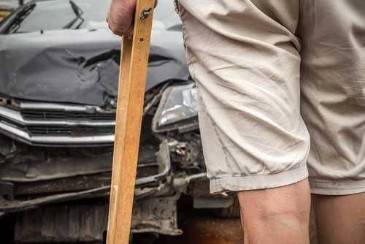Answer:
 What happens during the course of a personal injury trial in Idaho? Let’s break it down into what most people would consider as the various divisions of things that happen. When the trial starts, the very first thing is to pick the jury. That is a very involved process.
What happens during the course of a personal injury trial in Idaho? Let’s break it down into what most people would consider as the various divisions of things that happen. When the trial starts, the very first thing is to pick the jury. That is a very involved process.
If you have a one-party plaintiff against a one-party defendant, you’ll probably have about 40 or 50 people in the courtroom. From them, the 12 that will decide your case will be selected. That process is called a voir dire. It’s a legal term that means, “to speak the truth.”. The voir dire process is done strictly by lawyers. It’s controlled by the judge.
Basically, it involves questions with the prospective jurors that let us understand where they’re coming from and whether or not they have propensities that are favorable to you or unfavorable to you. There’s a process of actually striking juries. You have four automatic strikes of juries. It ultimately whittles down to the 12 that are going to decide your case. Oftentimes, these juries, they add another jury or 2, 13 or 14, just in case somebody gets sick and has to leave or something. At the end, when the process is done, the judge picks out the excess so you’re left with only 12 to make the decision. That’s the first step of the process.
The second step of the process is what’s called the opening statement, each lawyer’s opportunity to talk to the jury directly, not in a conversation way but just to give them a statement as to what they anticipate in the way of evidence. It’s the opportunity to express the theme of what the case is to the jury. Opening statements usually last something like an hour or less, a half-hour maybe. The judge also controls how much time for that.
The next is the actual trial process. That is the calling of witnesses and presenting evidence. The plaintiff, the one who was injured who brought the suit in the first place, gets to go first. They call their witnesses to talk to the jury about the case and what is presented as being at issue.
That will often involve the plaintiff, as well the medical people who are treating them, as well as other people who know them and the like. It’s a matter of selecting all the witnesses favorable to the plaintiff and then presenting them to the jury. Then the defense gets the right to cross-examine them, those same witnesses as well. Once the plaintiff is done presenting the witnesses and evidence on their behalf, then the defense has the right to go and do the same thing. They present their witnesses and their evidence or exhibits to the jury as well.
Once all that’s done, the plaintiff has one other opportunity for rebuttal. Anything that is newly brought up by the defense, the plaintiff gets an opportunity to rebut, which is usually quite a bit shorter than the original case. The judge again will be limiting how much rebuttal testimony will be allowed.
There are three times when witnesses are called to present evidence: plaintiffs, the defendants, and then rebuttal. Once that’s done, the case is considered submitted. The judge has a jury instruction conference with the lawyers. That’s a process that you would probably find excruciatingly boring, but it’s a matter of what instructions the jury will be given on the law as to be applied against the facts, and how they should make their decision, and the ways they should go about making their decision fairly.
After the jury instruction conference, the next and probably a lot of people consider them the most important phase of the case, and that is the closing argument of the case. Each side, an opportunity to argue to the jury what the evidence actually presented to them should result in. What is a fair result of the case?
Once that’s done, the case is literally submitted to the jury. The jury goes back in the room and deliberates. They identify a floor person to control how the process goes. Everybody waits until they return.
In Idaho, for civil cases, for tort cases or injury cases, it’s required only that 9 of the 12 agree. It’s a three-quarter majority verdict in Idaho, so you don’t have to have all 12 unanimously agreeing as you do in a criminal case. In a civil case, you only have to have nine.
Then, of course, there are post-trial things that happen, but that takes some time. Otherwise, it’s possible to have it appealed. For the most part, once the jury’s in, that’s the end of it, usually.
 What happens during the course of a personal injury trial in Idaho? Let’s break it down into what most people would consider as the various divisions of things that happen. When the trial starts, the very first thing is to pick the jury. That is a very involved process.
What happens during the course of a personal injury trial in Idaho? Let’s break it down into what most people would consider as the various divisions of things that happen. When the trial starts, the very first thing is to pick the jury. That is a very involved process.





